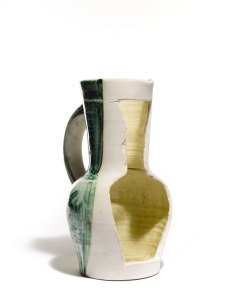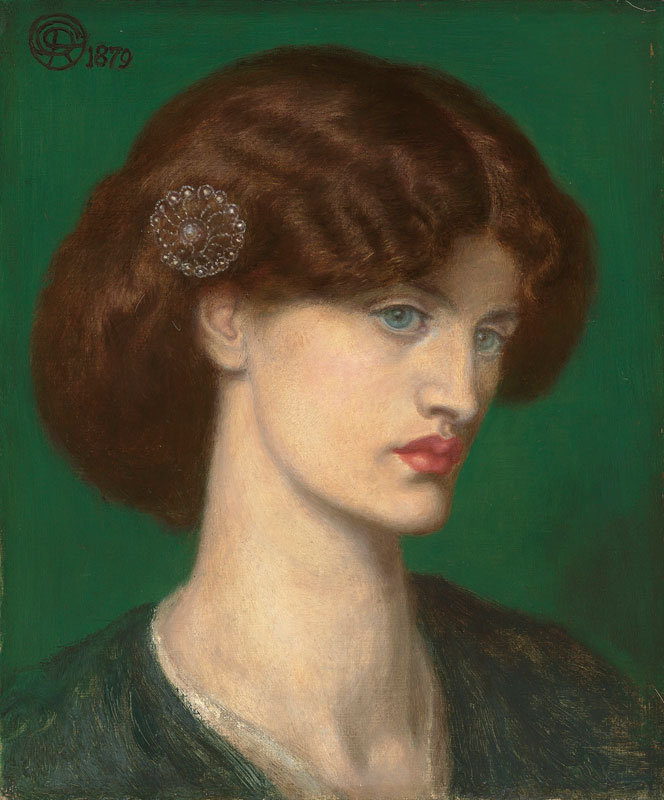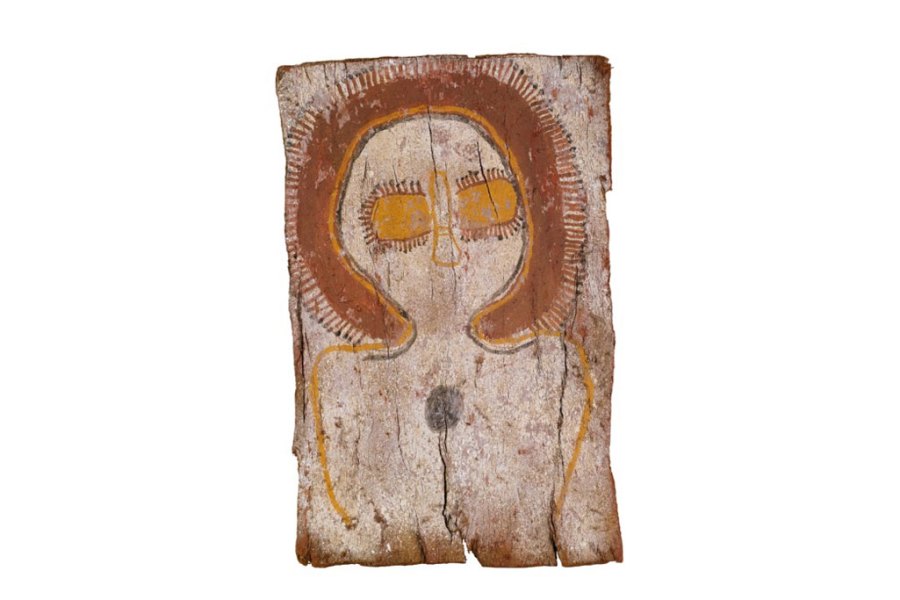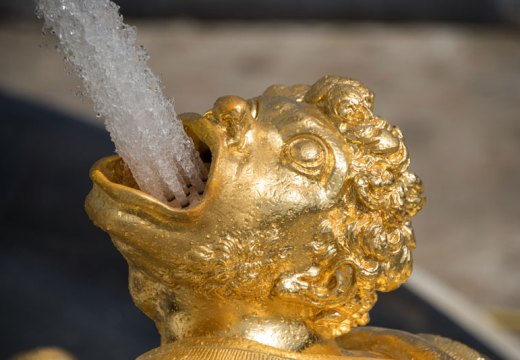From the June issue of Apollo: preview and subscribe here
June sales in London: Aboriginal art, Picasso ceramics, Bacon self-portraits and Pre-Raphaelite works.
This year’s June sales in London see a number of exceptional and atypical auctions alongside the traditional offerings. Perhaps most unexpected is the Aboriginal art sale at Sotheby’s on 10 June. Not only is it the first auction of this kind held outside Australia for a decade, but it also represents the highlights of the vast and significant collection amassed by the Dutch businessman Thomas Vroom.
What makes Vroom’s holdings remarkable is that they include three important anthropological collections. First is a group of bark paintings – sacred designs painted on the underside of a strip of tree bark – made for Lance Bennett in Western Arnhem Land in 1966. These include a number of erotic images that would not have been offered to the region’s missionaries who traditionally sold indigenous art in the cities. Then there are the Wanjina paintings on bark or boards from Kimberley, which Vroom acquired from the archaeologist Kim Akerman. Representing cloud and rain spirit figures, Sotheby’s consultant Timothy Klingender describes them as ‘the most important group of paintings of their kind to come to auction’. Joseph Birdsell was the source of the rare early drawings on offer, while Vroom himself amassed the group of pre-contact wooden shields dating from the mid 19th century – arguably the finest to ever come to auction.
For this sale, Klingender has selected works that he thought would also have cross-market appeal, to both buyers of African and Oceanic art and contemporary collectors. Certainly the Wanjinas – the cosmological beings that have been represented in the region’s celebrated rock art for thousands of years – should have particular resonance for the latter, with their strong outlines, halo-like headdresses and mouthless faces with blank, round eyes. Their prices should make collectors sit up and take note too, with estimates up to £30,000. The monochrome bark paintings are striking in a different way, the figures here characterised by expressive, elongated forms. Estimates begin at £1,500 and go up to around £100,000 for paintings by the likes of Emily Kngwarreye (1910–96) and Rover Thomas (1926–98).
In February, Marina Picasso set alarm bells ringing throughout the art trade by announcing that she would sell off parts of her collection herself, bypassing dealers and auction houses. With more than 10,000 works inherited from her grandfather, she is keen to raise funds for her charitable activities, but how many works she is intending to sell – and when – is unclear, as well as how this will impact the market. Sotheby’s, which sold two paintings two years ago and two drawings in December, is no doubt relieved to find itself charged with selling more of the collection – a representative group of 112 unique ceramics (around half her holding) – at its London saleroom on 25 June.

Grand pichet échancré, décor vase (1954), Pablo Picasso. Sotheby’s London (estimate: £180,000–£250,000)
Many of these works are unrelated to the artist’s ceramic editions, and bear testimony to his exuberant whimsicality and inventiveness in the medium. Some, like a painted and incised pitcher, Grand pichet à bec pointu, femmes fleurs of 1948, reveal him decorating a traditional, functional vessel with a design that echoes its particular form – in this case a female nude with outstretched arms filling its hourglass shape (estimate £100,000–£150,000). Particularly appealing are the modelled animals and figures, like the painted jug in the form of a recumbent goat whose handles emerge like horns (estimate £120,000–£180,000).
Perhaps more interesting, however, are the radical and experimental pieces, such as the swan-necked form that he created by cutting a vase in half and allowing it to partly collapse before firing it. Another example is a painted and partially glazed pitcher on which he has carved out the shape of the jug itself. With expectations of £180,000–£250,000, this decorated vase is expected to fetch the highest price of the sale. Estimates begin at £2,000 for a tile, and some £4.5m is expected. Interestingly, the record for a Picasso ceramic – £1.3m – was set in February by a hand-painted terracotta owl made in a small edition.
The human form was the focus of a collection assembled in the 1970s and ’80s that is to be dispersed through various Sotheby’s sales in London and Paris in June and July. Among the highlights is one of Henry Moore’s monumental bronzes – Falling Warriorof 1956–57 (London, 24 June; estimate £1.8m–£2.5m) and a group of small Francis Bacon self-portraits that have not been seen in public since they left Marlborough Fine Art.
The latter includes Self-Portrait of 1975, which sets the artist in his trademark macintosh against a midnight blue ground, his head in three-quarter profile (London, 1 July; £10m–£15m). Perhaps most splendid of all is an exceptional 17th–18th-century Akan terracotta memorial head from Ghana commemorating a royal princess (Paris, 24 June; estimate €200,000–€300,000).

Beatrice: A portrait of Jane Morris (1879), Dante Gabriel Rossetti. Christie’s London (estimate: £700,000–£1m)
Female heads also dominate the fine collection of Pre-Raphaelite and Victorian works presented at Christie’s London on 16 June. This group of Pre-Raphaelite ‘stunners’, as the artists termed them, refers to the strong-jawed, fleshy lipped and copiously coiffed women so beloved of the PRB, and this sale includes several of them masquerading as great literary heroines. Jane Morris is depicted as Dante’s Beatrice in an 1879 painting by Dante Gabriel Rossetti (£700,000–£1m), while Alexa Wilding is the subject of the artist’s impressive life-size black chalk study for Shakespeare’s Desdemona (£500,000–£800,000).
Another tour de force is Sandys’ pencil and chalk drawing of Scott’s Proud Maisie, a study of his muse and common-law wife Mary Emma Jones, and admired by Swinburne for her ‘rich, ripe, angry beauty’ (£50,000–£70,000). More intimate is Rossetti’s endearing pencil drawing of Fanny Cornforth curled up in her vast crinoline and fast asleep on the couch (£120,000–£180,000). All four would be equally at home in Chelsea or in a museum.
Last but by no means least is Gerhard Richter’s portrait series of the German dealer Alfred Schmela. Schmela gave Richter his first solo show in 1964 at his gallery in Düsseldorf, and this series of six characteristically blurred monochrome images are based on the dealer’s photo-booth passport photographs. They are also impressive likenesses that capture Schmela’s sense of humour. When the Richter market first took off, it was these monochromes that were his most sought-after paintings. These days it is the large and colourful abstracts. It will be interesting to see what this canvas fetches on 1 July when it goes under the hammer at Sotheby’s London (estimate £3m–£4m).
Click here to buy the latest issue of Apollo
Unlimited access from just $16 every 3 months
Subscribe to get unlimited and exclusive access to the top art stories, interviews and exhibition reviews.














![Masterpiece [Re]discovery 2022. Photo: Ben Fisher Photography, courtesy of Masterpiece London](http://www.apollo-magazine.com/wp-content/uploads/2022/07/MPL2022_4263.jpg)
It’s time for the government of London to return to its rightful home